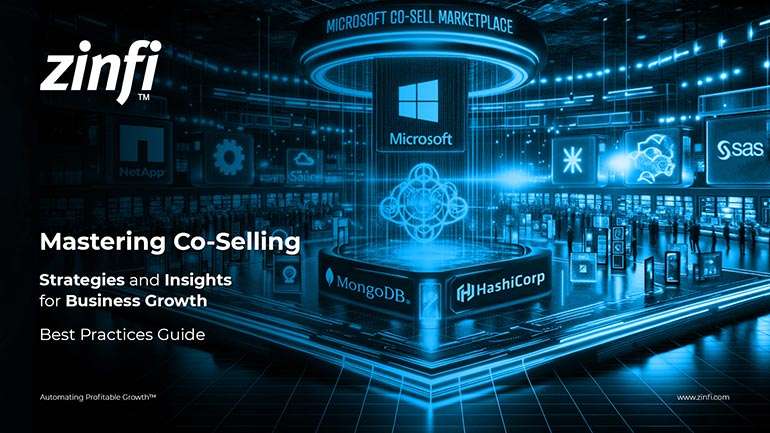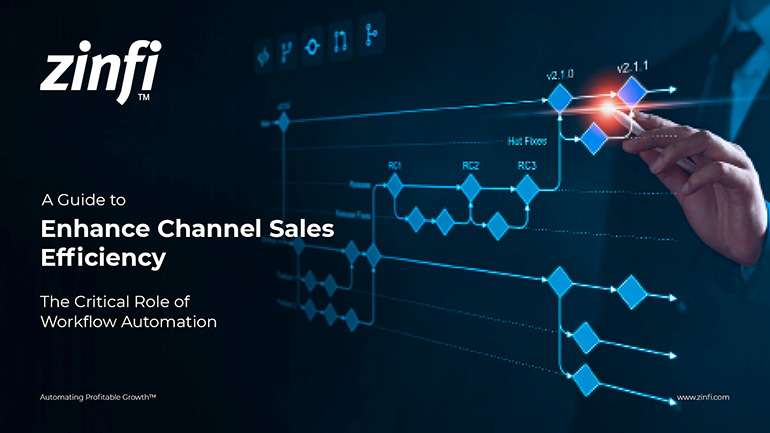Best Practices Articles

Make Your Channel Go Vroom Vroom with PRM Software
You must be saying, “What? Is my channel a car?” Well, guess what? In many ways your channel is like a car. It takes you from point A to point B on the road to a profitable sales growth target. Just as any car needs regular oil changes, alignment and tune-ups, a channel needs its own upgrades and tune-ups. And this is where next-generation PRM software comes in.
When was the last time you opened up your car’s hood and looked inside the carburetor? If you said recently, then I have to assume you have a car from the 60s, and you are aware that you can no longer run a car like that in the Indy 500. Yes, your car may have been a top performer in the 60s, but if you want to compete in today’s channel you need a Mach 1 engine, and to get there you need PRM software.
Here are current Formula One car specifications from indycar.com:
Formula One Car
Top speed: Approx. 200 mph
Engine: Turbocharged, 1.6-liter V-6
Horsepower: Approx. 760 (600 from engine and 160 from energy recovery systems)
Gearbox: Semi-automatic with eight forward gears plus reverse
Fuel: Unleaded racing gasoline
Tires: Un-grooved racing slicks and grooved wet condition tires
Weight: Maximum of 1,591.74 pounds (722 kilograms), including driver, safety gear, and tires but without fuel
Height: 37.40 inches maximum (95 centimeters)
Width: 78.74 inches, maximum (200 centimeters)
Did you notice that the current Formula One has an engine with 760 horsepower? If you are driving a Scarab F1 Offenhauser from the 1960s, it would have 220 BHP, and there was no recovery system. What a difference 60 years make, right?
Well, the unfortunate reality is that most organizations still run their channel the way they ran it in 60s. There is very little structured process, automation and alignment across functions, and very few organizations have deployed a state-of-the-art channel automation engine—i.e., PRM software.
PRM software can indeed help significantly, provided you have attended to the functional alignment between marketing, sales and channel organizations and clearly defined your channel programs and processes. Once you have done that, properly deploying PRM software can help you streamline partner recruitment, onboarding, training, multi-partner demand generation and sales activities.
The reason I turned to this Formula One analogy is not just to talk about the fine-tuned, state-of-the-art engine that PRM software can be, but also to discuss how a channel organization can deploy its resources most effectively.
If you look at the pit crew for an Indy 500 team, they are incredibly focused, organized and process-driven. If these same attributes don’t apply to your organization, then there is no way you are going to change those wheels out in seconds—and, of course, every second counts. If you are the driver sitting inside the car, whatever information you see on the dashboard had better give you all the information you need to decide in a fraction of a second exactly how fast to go and how forcefully to steer. One little false move can be a matter of life or death for a racer.
While the fate of a channel organization is not quite that critical, you could argue that one wrong move on a product, a pricing decision or a channel program can wipe away years of confidence-building among the partner base. Just like the pit crew of a Formula One racing team, a channel team needs to be nimble, focused, data-driven and fully automated to get enormously risky things done effectively. It can be scary, but also incredibly exciting.
As we have seen repeatedly seen in our client base, when a channel team truly aligns functions and programs and processes by tapping into the power of PRM software they can really can go vroom vroom.
Best Practices Guidebook
 Winning with Partner Advisory Councils: Best Practices for Partner Engagement & Growth
Winning with Partner Advisory Councils: Best Practices for Partner Engagement & GrowthDownload Guide
 The Future of Partner Ecosystems Best Practices
The Future of Partner Ecosystems Best PracticesDownload Guide
 The AI Revolution: How Technology and Talent are Shaping the Future
The AI Revolution: How Technology and Talent are Shaping the FutureDownload Guide
 Top 105 Partner Management Metrics that Matter Best Practices
Top 105 Partner Management Metrics that Matter Best PracticesDownload Guide
 Mastering PRM Integration Best Practices
Mastering PRM Integration Best PracticesDownload Guide
 Building a Sales Partner Portal with Salesforce Best Practices
Building a Sales Partner Portal with Salesforce Best PracticesDownload Guide
 Building and Managing Partner Ecosystems Best Practices
Building and Managing Partner Ecosystems Best PracticesDownload Guide
 Mastering Co-Marketing and Co-Selling Best Practices
Mastering Co-Marketing and Co-Selling Best PracticesDownload Guide
 Transforming Partner Ecosystems Best Practices
Transforming Partner Ecosystems Best PracticesDownload Guide
 Mastering Partner Ecosystems Best Practices
Mastering Partner Ecosystems Best PracticesDownload Guide
 Mastering Partner Onboarding Best Practices
Mastering Partner Onboarding Best PracticesDownload Guide
 Partner Ecosystem Management Best Practices
Partner Ecosystem Management Best PracticesDownload Guide
 B2B Marketing in the Age of Intelligence Best Practices
B2B Marketing in the Age of Intelligence Best PracticesDownload Guide
 Multi-Partner Co-Selling Best Practices
Multi-Partner Co-Selling Best PracticesDownload Guide
 A Guide to Enhance Channel Sales Efficiency
A Guide to Enhance Channel Sales EfficiencyDownload Guide
 Mastering Affiliate Marketing Best Practices
Mastering Affiliate Marketing Best PracticesDownload Guide
 The Ultimate Guide to Channel Partner Management
The Ultimate Guide to Channel Partner ManagementDownload Guide
 Top 10 Trends in 2024 Partner Relationship Management
Top 10 Trends in 2024 Partner Relationship ManagementDownload Guide







